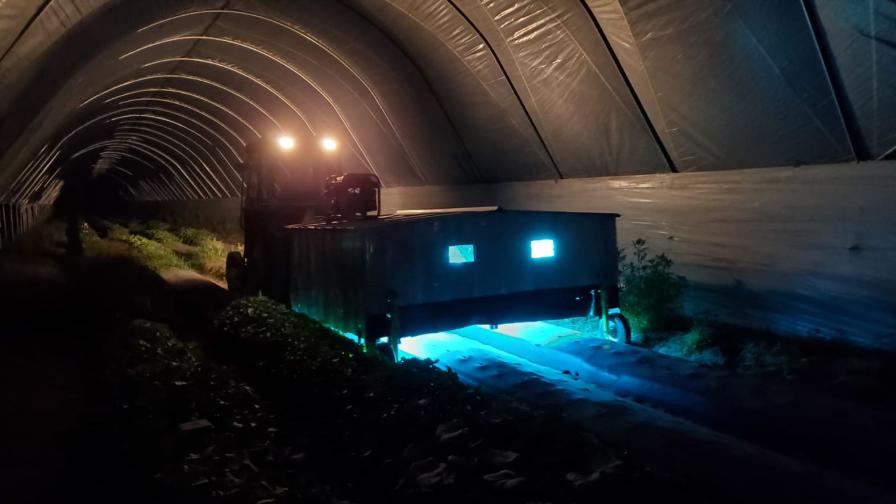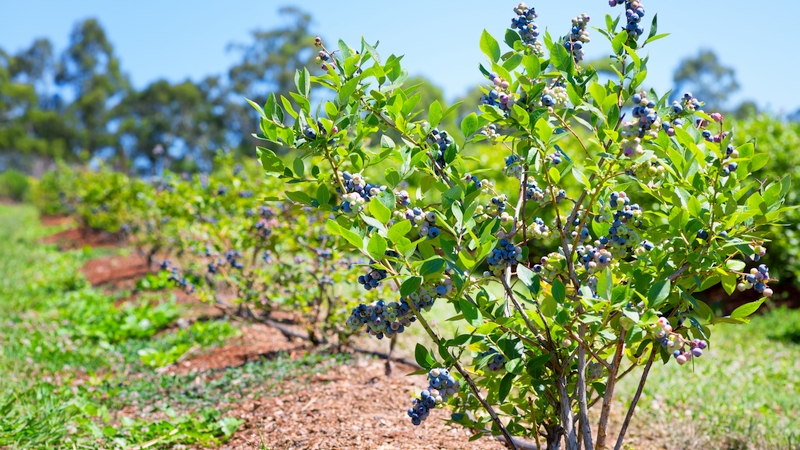UV Light Behind Bright Idea To Beat Powdery Mildew in Cantaloupe

University of Florida researchers using UV light technology to suppress powdery mildew in cantaloupe plants.
Photo courtesy of UF/IFAS
Powdery mildew is a formidable plant disease that growers struggle to control, even with fungicides. The malady can be deadly to cantaloupe. Thanks to UF/IFAS research, growers may now want to consider shedding ultraviolet (UV) light on the matter.
Natalia Peres, a UF/IFAS Plant Pathology Professor, has published a new study that shows UV light can zap the pathogen on the plants – without damaging them.
“Powdery mildew is one of the most common and severe diseases of cucurbits worldwide,” Peres says. “It can be a major disease on cantaloupes grown in Florida, although there are some cultivars that tolerate it better.”
Studies show powdery mildew can fight the natural UV light of daytime, but not at night.
“If we applied UV light during the day, we would need to use higher doses to get the same effect,” Peres adds. “However, these natural defenses are not active at night, so by applying UV light at night, we can bypass the natural defenses of the pathogen and kill it with lower doses that we would need during the day.”
That’s why scientists put an ultraviolet lamp behind a tractor, drove it onto a research farm once or twice a week (overnight), pointed the light at the cantaloupe and struck the mildew out of the plant.
“Our unit was built in a shop by one of our strawberry growers,” Peres said. “Similar and bigger units could be designed and built for growers to use at their farms.”
No commercial units are available for field applications – yet, but there is a lot of research recently on the use of UV light in agriculture systems.
Peres has already shown the UV light can work to suppress powdery mildew in strawberries. Her research using the UV light on strawberries caught the attention of a colleague of hers in Brazil.
She hopes these findings give a ray of hope to cantaloupe farmers across the globe.
“The UV light may be a practical approach to suppress powdery mildew in cantaloupe with the potential to reduce disease severity without damaging the plants or decreasing yield,” she says. “We are very limited in the number of types of fungicides available to control this and other diseases. Additionally, pathogens are acquiring resistance to some of these fungicides, so we need alternative methods.”









